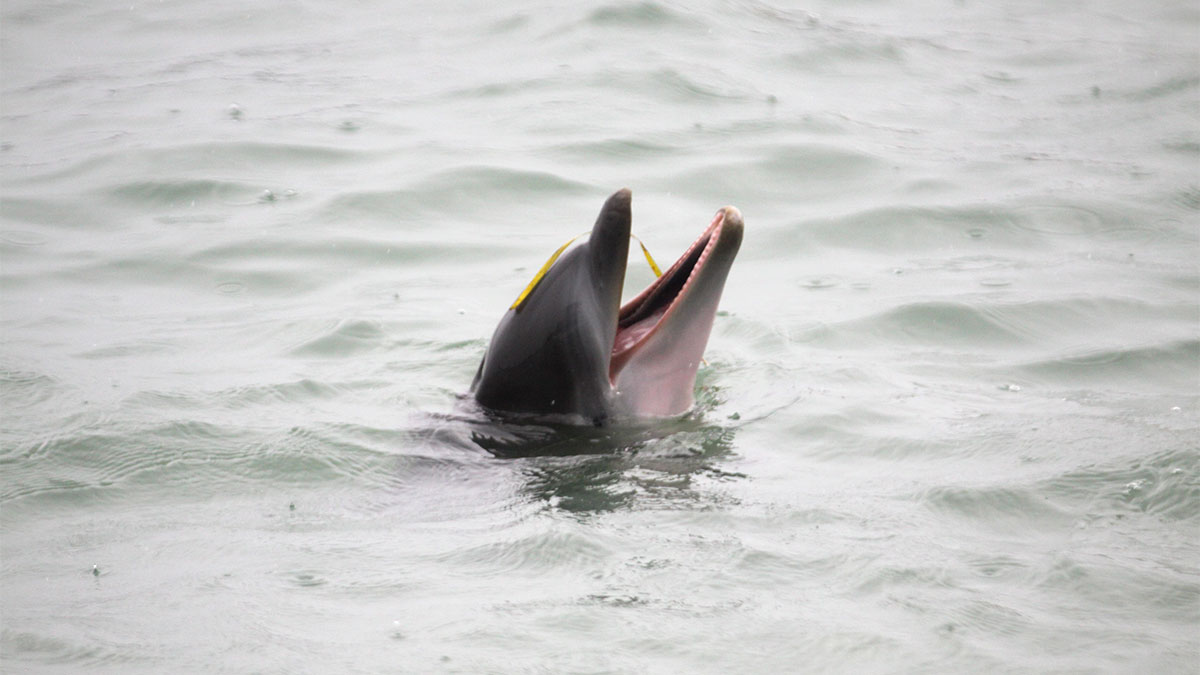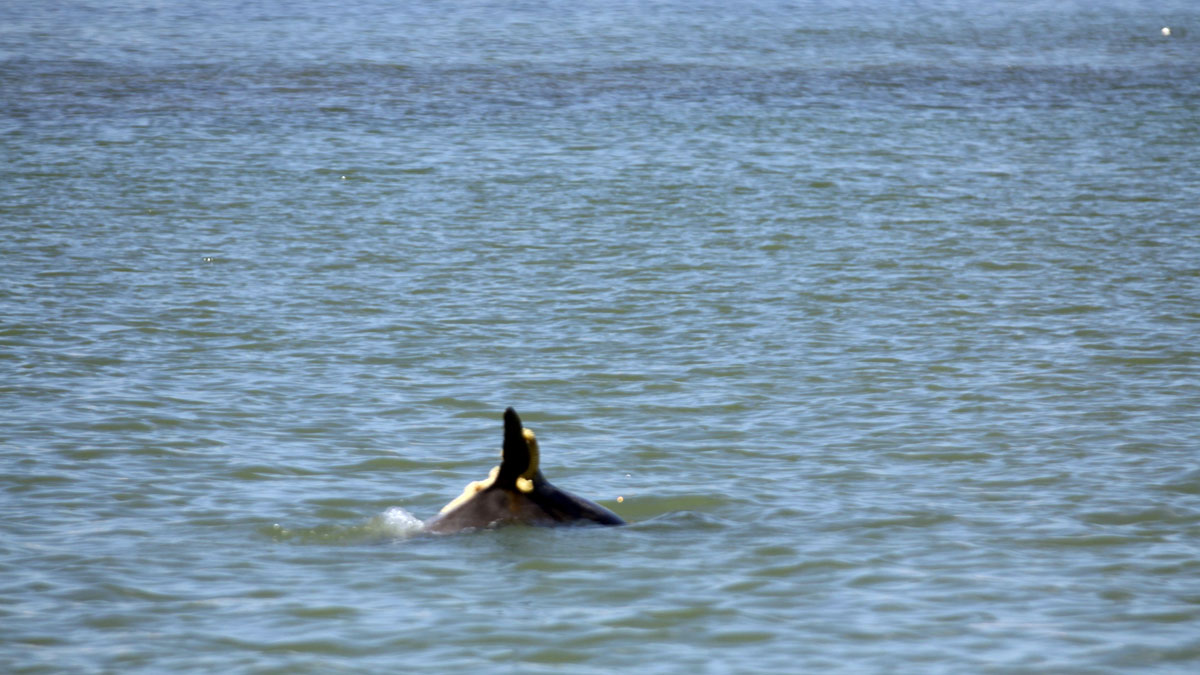Wild Dolphin Updates

Calves Play With “Toys” in the Wild
Through monitoring efforts in Clearwater Bay, we often have the opportunity to observe dolphins displaying unique behaviors. Typically dolphin behaviors are based on how they are interacting with objects or other animals in their environment. One of our favorites, which we have witnessed many times, is seagrass play and manipulation. A bottlenose dolphin calf was recently seen playing with a seagrass blade using her rostrum or mouth. She was even seen tossing the seagrass blade out of the water! Luckily, our team was able to capture photographs of this unique play behavior, and if you look closely, you can even notice that the calf has yet to grow teeth!

Dolphins Can Carry Objects and Use as Tools
In addition to seemingly playing with objects, such as seagrass blades, dolphins are also known to carry objects. For example, wild dolphins in Australia have been documented carrying sponges using their rostrum, according to a study published in the journal Ethology. It is suspected that this behavior is a specialized foraging tool that aids the dolphin in locating and/or capturing prey.
In other cases, dolphins have simply draped objects on parts of their body. This was observed in 2017 by Clearwater resident, Lenny. Lenny, a known male bottlenose dolphin, was seen swimming with what at first appeared to be a rope across the front of his dorsal fin, however, after further investigation, we were able to confirm he was “wearing” a sea snail egg casing! After some surfacing, the casing dropped. Behaviors such as these emphasize how a dolphin’s intelligence allows them to utilize objects in their environments in ways many other marine animals would not. They also make each day on the water a fun and unique experience!
Clearwater Marine Aquarium’s Wild Dolphin Research Team provides monthly updates on the local dolphin population. Learn more about wild dolphins and help gather research data on the Dolphin Adventure Boat Tour or adopt a wild dolphin today.
Research conducted and photographs collected under the NMFS Scientific Research Permit No. 19749.